Sempervivum vs Echeveria: Shocking Differences You Can’t Unsee
Succulents are the “it” plants taking over homes and gardens everywhere. But do you know the mind-bending differences between the succulent cousins Sempervivum and Echeveria? After reading this, you’ll never mix them up again!
At first glance, these rosette-forming plants seem nearly identical. Their fleshy leaves spiral out into geometric perfection. But look closer – one tiny detail separates the chill Sempervivum from the glamorous Echeveria. Can you spot it?
Let’s dive into the shocking differences (and surprising similarities) between these succulent stunners. By the end, you’ll be a Sempervivum vs Echeveria expert, amazing your plant pals! It’s an unmissable succulent showdown.
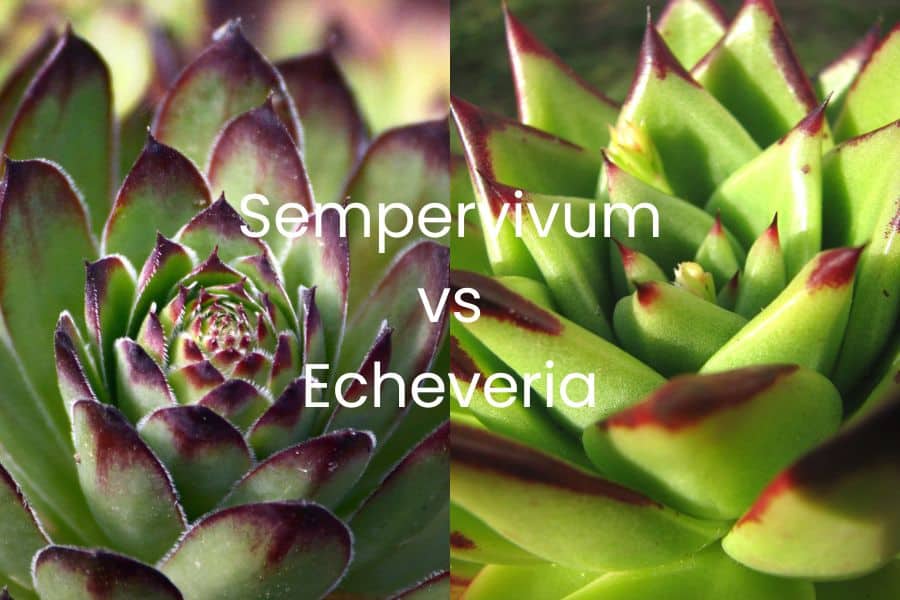
Contents
- 1 Difference #1: Their Homeland Roots
- 2 Difference #2: Frosty Tolerance
- 3 Difference #3: Spectacular Shades
- 4 Difference #4: Compact vs Oversized
- 5 Difference #5: Flower Power
- 6 Difference #6: Baby-Making Machines
- 7 Difference #7: Propagation Potential
- 8 The Similarities
- 9 Caring for Sempervivum
- 10 Caring for Echeveria
Difference #1: Their Homeland Roots
Sempervivum, those rugged alpines, hail from the mountains of Europe and North Africa. Rocky cliffs and freezing temps of places like the Alps? No problem for these hardy hens!
But Echeveria prefers sunbathing in the deserts of Central America and northwestern South America. Born in places like toasty Mexico, these sunburnt beauties love dry heat.
Difference #2: Frosty Tolerance
In the winter, Sempervivum shrugs off frosty conditions down to -22°F without blinking an icy leaf. It’s made for harsh, sub-zero climates in growing zones 4-10.
Echeveria, on the other hand, is a cold-averse diva. While it can technically handle quick freezes in zones 9-11, it much prefers a consistent 60-75°F temperature range indoors.
Difference #3: Spectacular Shades
Both plants form iconic rosettes, but in very different hues. Sempervivum sports muted shades like gray-green, red-brown, and muted pinks. Its pointed leaves give off a spiky, almost dragon-like vibe.
In contrast, Echeveria goes full glamour with vivid greens, grays, and blues. Those plump, rounded leaves in dazzling colors resemble flawless mermaid tails bursting forth.
Difference #4: Compact vs Oversized
While both make rosettes, the largest Sempervivum tops out at just 5 inches across – a humble, understated look. They often grow in dense, intertwined clumps around 2-8 inches wide.
But Echeveria doesn’t do subtle. These showoffs flaunt giant rosettes over 20 inches wide! A single monster plant can grab all the attention in the garden.
Difference #5: Flower Power
When Sempervivum blooms star-shaped flowers in summer, it’s a small, subtle affair up on short fleshy stems. More decoration than a showstopper.
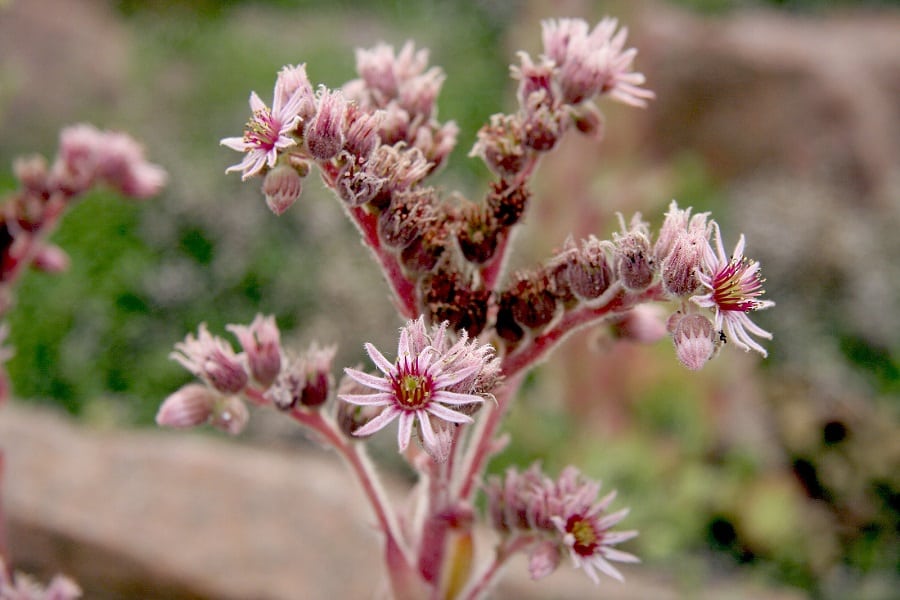
Echeveria sends up multiple bright, bell-shaped blooms of pink, red or orange that command the spotlight. Now that’s the kind of flowering performance succulent fans live for!
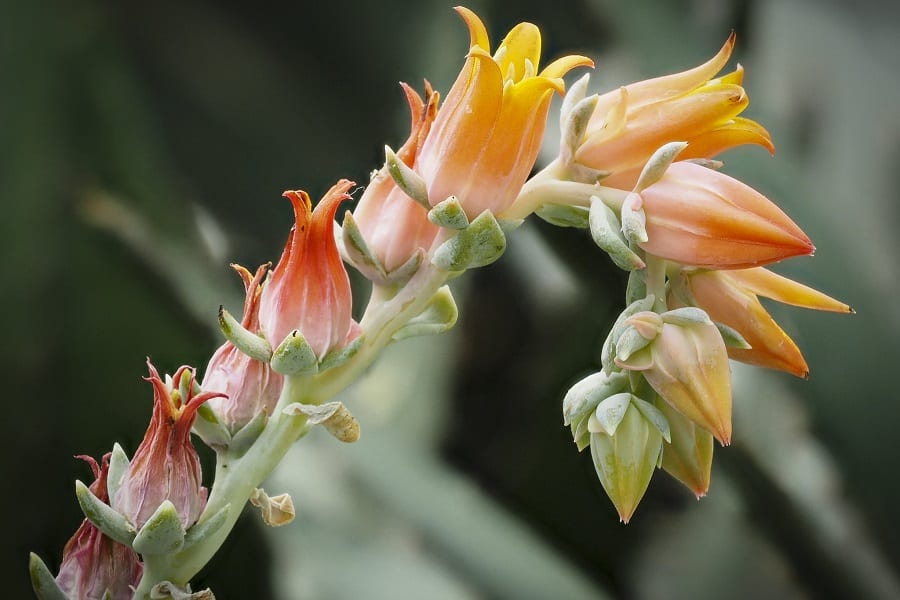
Difference #6: Baby-Making Machines
Both make tons of adorable offset “chicks” around the primary rosette “hen.” But their kids take different approaches:
Sempervivum’s offsets start out attached by runners that allow them to eventually set down their own roots nearby.
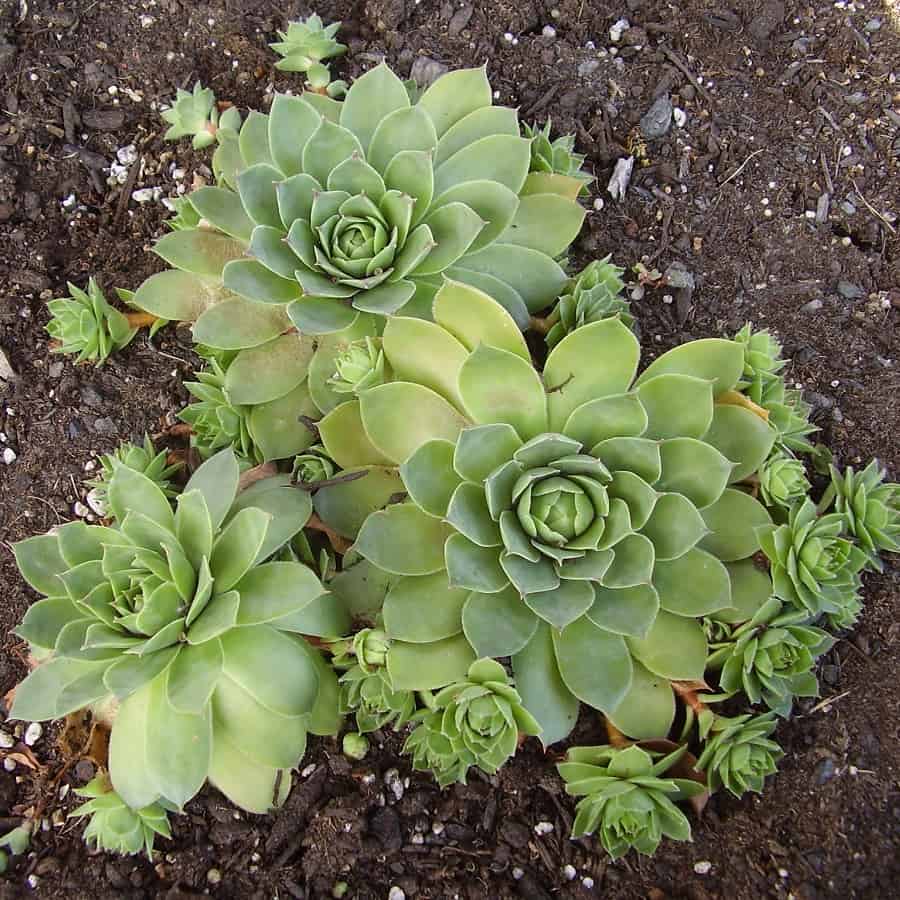
Echeveria keeps all its chicks densely clustered together in one inseparable bunch emerging from the base – a tight-knit crew.
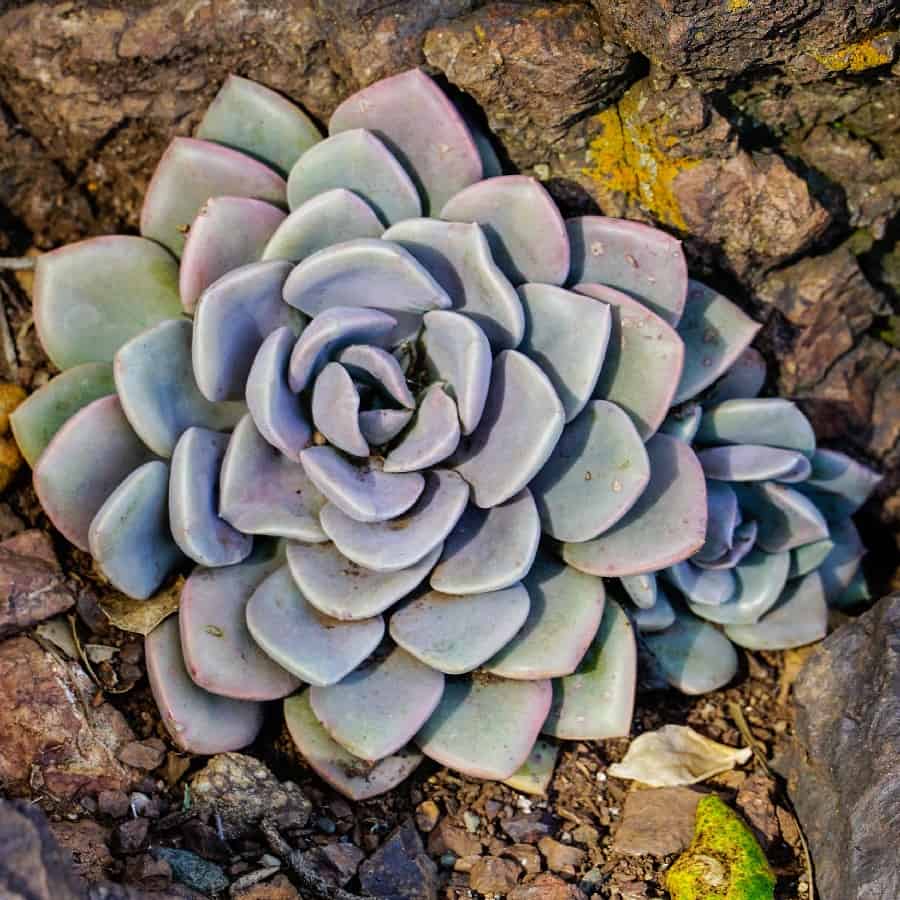
Difference #7: Propagation Potential
Sempervivum plants are quite stubborn when it comes to propagation. They can’t be easily propagated from stem or leaf cuttings like other succulents. The most reliable ways are:
- Taking offsets that have formed their own root systems and replanting them
- Growing new plants from seeds
Echeveria, on the other hand, is a propagation overachiever! You can easily multiply your collection by:
- Removing and replanting offsets from the base cluster
- Propagating from leaf cuttings
- Propagating from stem cuttings
- Growing new plants from seeds
The Similarities
Despite their differences, these cousins do share some common bonds:
- Both are true succulents, storing water in thick stems and leaves
- Their rosette shapes create unmissable geometric artistry
- Both easily propagate by offsets (and leaf cuttings for Echeveria)
- Originating from harsh climates, they need excellent soil drainage
- With proper sunlight, both make awesome, low-maintenance houseplants
The family resemblance is strong – it’s those little quirks that make Sempervivum and Echeveria so distinctly fascinating. Who’s your favorite: the rustic mountain woman or the flamboyant desert diva?
Caring for Sempervivum
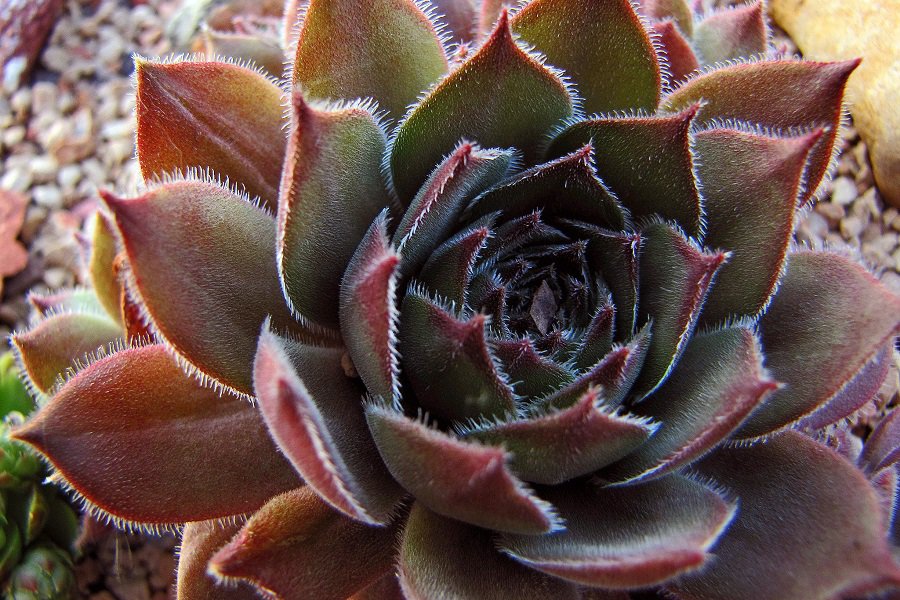
- Grow in full sun, afternoon shade in hot climates
- Use well-draining soil with 25-50% sand/grit
- Water thoroughly when soil is dry during the growing season, and reduce watering in winter
- Hardy down to -22°F, prefers 65-75°F
- Fertilize once a year in spring with controlled-release or liquid fertilizer
Caring for Echeveria
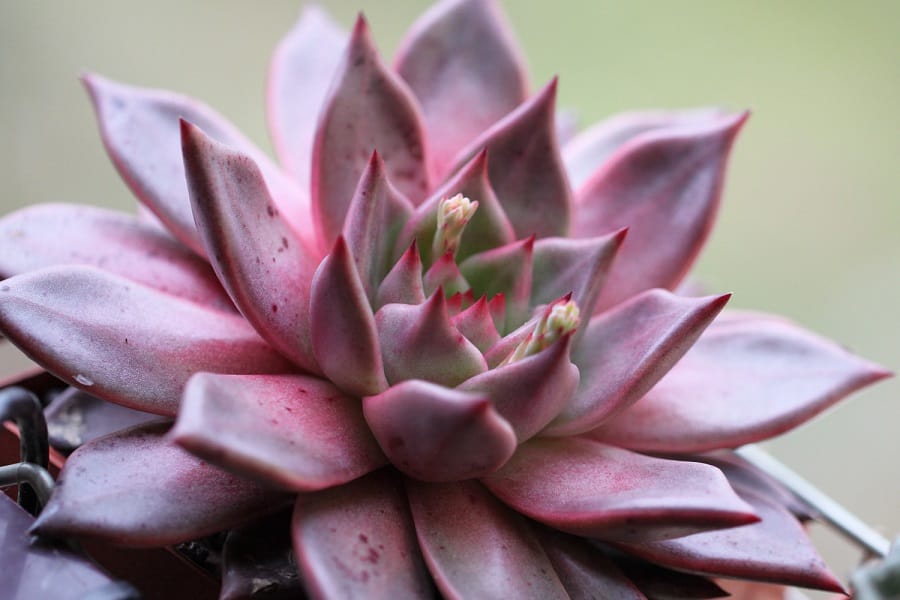
- Provide full sun to partial shade, acclimate to full sun slowly
- Use well-draining succulent/cactus potting mix
- Water moderately, allow soil to dry between waterings
- Bring indoors if temps drop below freezing
- Fertilize diluted in spring when growth begins
- Prune dead leaves/flowers to prevent pests/disease
